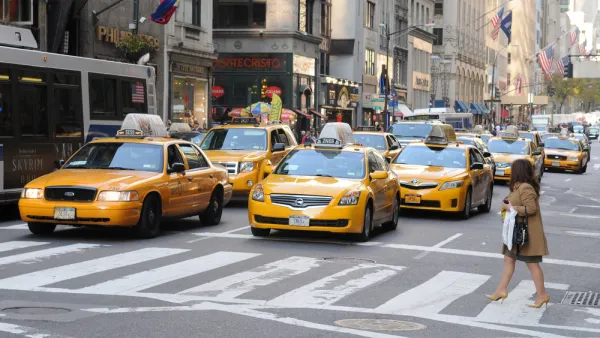Americans are less mobile than they were decades ago and it's unclear why. Possible explanations include the recession, habits based on family make-up, as well as telecommuting and job trends, but none of these proposed reasons can be easily proven.
According to recently released U.S. Census data [PDF] from the Current Population Survey, American mobility rates are at an all time low. “About 100 million people (aged 5 and up) lived in a different home or apartment in 2010 than they did in 2005” reports Eric Jaffe, “[b]ut that total is down from 107 million movers between 2000 and 2005, and the latest mobility rate is 10 points off the peak rate back in the mid-1970s.” The Census explains who is moving and where they are moving to, but not why.
"At the Conversable Economist, Timothy Taylor points us to a 2011 study that found America's declining mobility to be a bit of an ongoing mystery. That study considers a number of theories, but finds each of them flawed. It concludes [PDF]: "By most measures, internal migration in the United States is at a 30-year low. Migration rates have fallen for most distances, demographic and socioeconomic groups, and geographic areas. The widespread nature of the decrease suggests that the drop in mobility is not related to demographics, income, employment, labor-force participation, or homeownership."
"At the end of the day, writes Taylor, Americans might just be 'shifting their preferences away from being willing to move.'"
FULL STORY: The Mystery of Our Declining Mobility

Analysis: Cybertruck Fatality Rate Far Exceeds That of Ford Pinto
The Tesla Cybertruck was recalled seven times last year.

National Parks Layoffs Will Cause Communities to Lose Billions
Thousands of essential park workers were laid off this week, just before the busy spring break season.

Retro-silient?: America’s First “Eco-burb,” The Woodlands Turns 50
A master-planned community north of Houston offers lessons on green infrastructure and resilient design, but falls short of its founder’s lofty affordability and walkability goals.

Test News Post 1
This is a summary

Analysis: Cybertruck Fatality Rate Far Exceeds That of Ford Pinto
The Tesla Cybertruck was recalled seven times last year.

Test News Headline 46
Test for the image on the front page.
Urban Design for Planners 1: Software Tools
This six-course series explores essential urban design concepts using open source software and equips planners with the tools they need to participate fully in the urban design process.
Planning for Universal Design
Learn the tools for implementing Universal Design in planning regulations.
EMC Planning Group, Inc.
Planetizen
Planetizen
Mpact (formerly Rail~Volution)
Great Falls Development Authority, Inc.
HUDs Office of Policy Development and Research
NYU Wagner Graduate School of Public Service




























